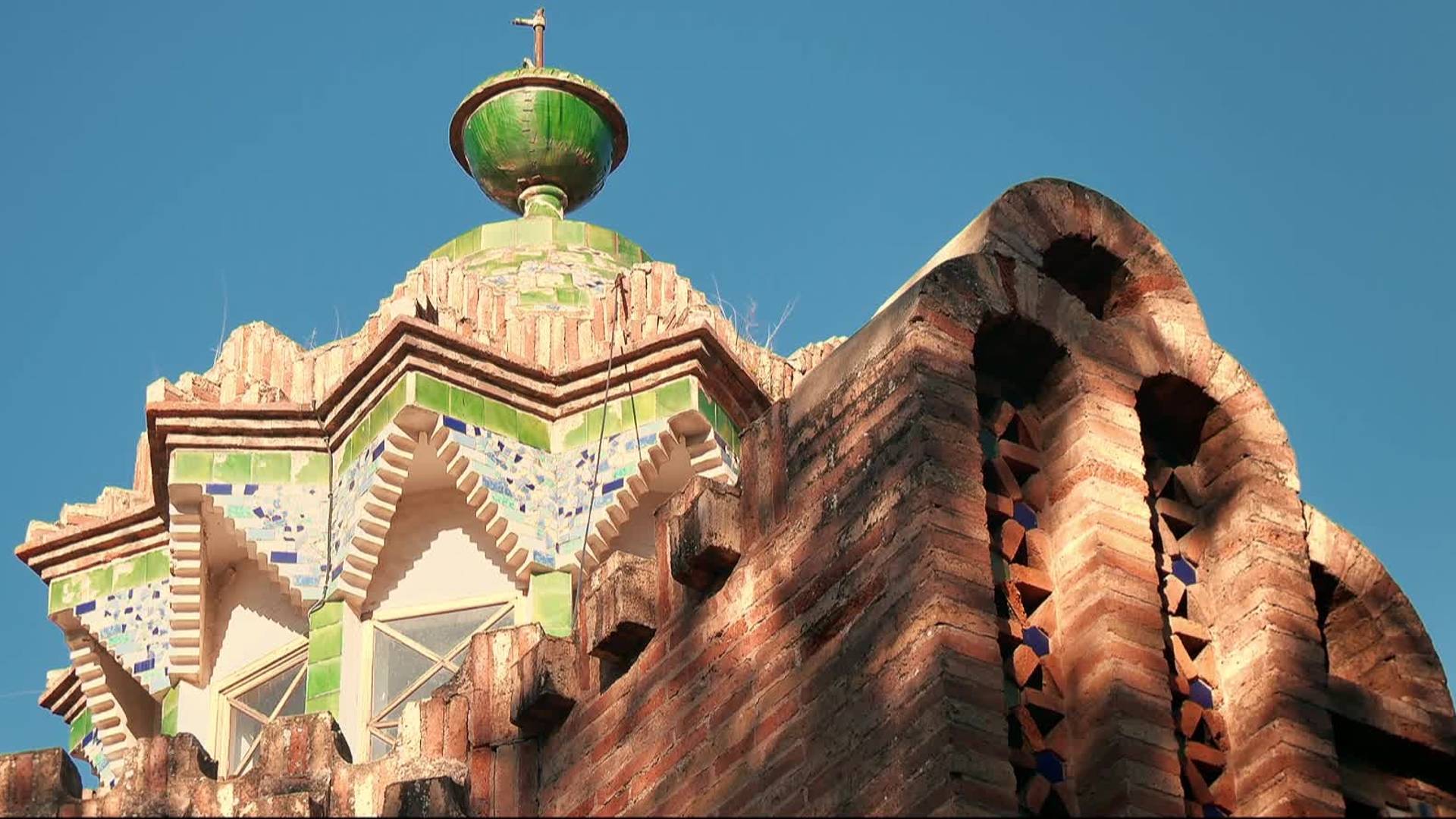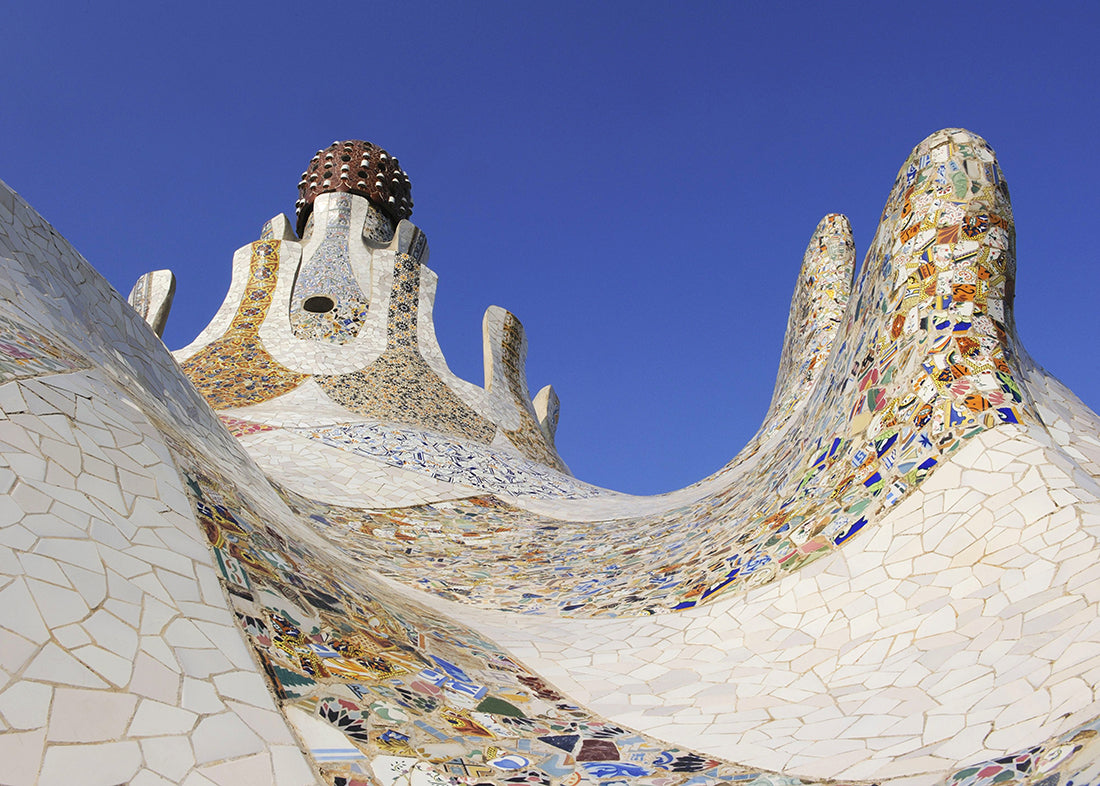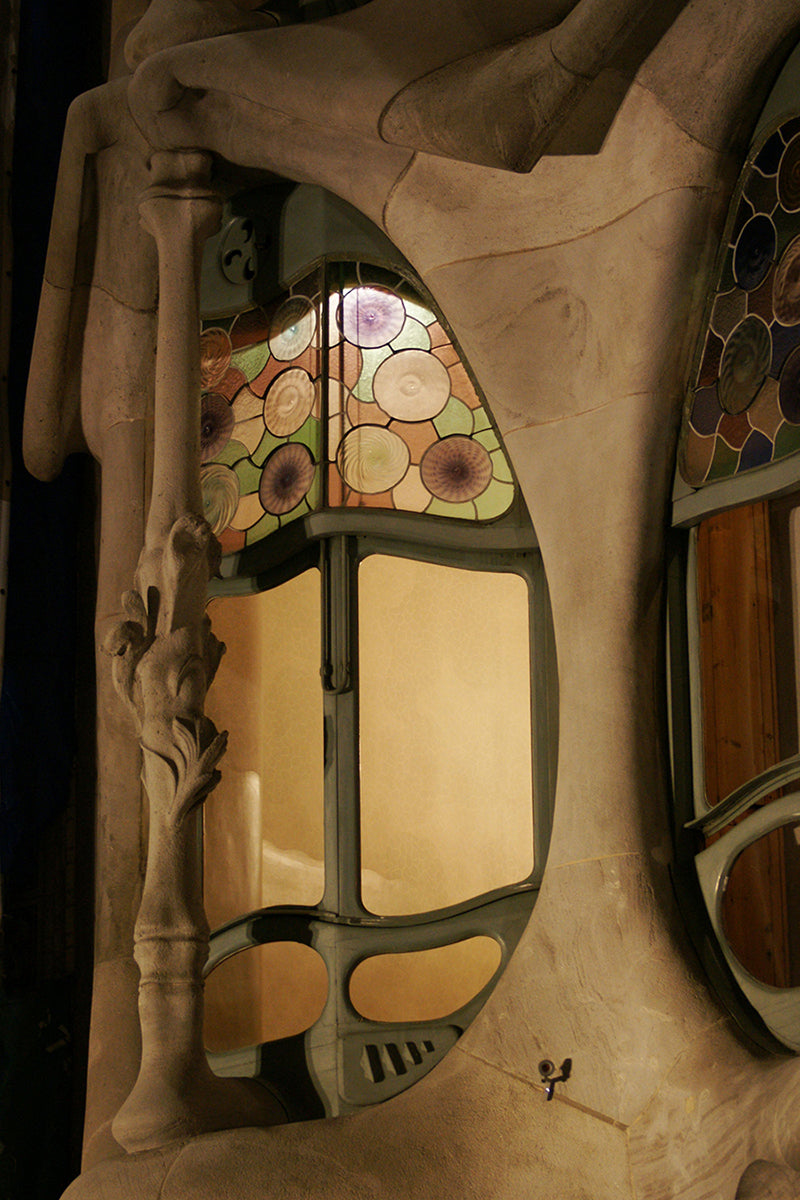Antoni Gaudí: architect. innovator. tile obsessive.
by clé tile | published: Jun 29, 2023

facade of sagrada familia basillica, barcelona (source)
there are buildings that are beautiful, but which tend to fade into the background of our memories. there are others that are so unusual, iconoclastic, and yes, breathtakingly beautiful, that they’re seared into our consciousness. we’re betting that at least one of the latter will be the work of Spanish architect, Antoni Gaudí, a master of color and curves — and of tile.
Gaudi might be known for his inventive, unconventional nature-inspired designs–but his use of tile was equally groundbreaking. The architect so revered the possibilities and storytelling power of tile that he used it prominently — prolifically — in many of his buildings, both as a functional surface material and as a decorative element that helped express his artistic vision. at clé, we love Gaudi’s work for its lyricism, sheer daring, and utter love of materiality: creative touchstones in all we do.
fool or genius?
Gaudí became one of Spain's greatest exponents of Catalan Modernism, with intense, expressive work that has come to define the look and feel of Barcelona. His sense of design daring and architectural adventurousness appeared early in his life: his work was so innovative that upon graduating from the Barcelona School of Architecture in 1878, the school's director commented, "We have given this academic title either to a fool or a genius. time will show."
It didn't take long for Gaudí to reveal on which side of this spectrum he fell.
In 1883, he was put in charge of a project to build a new church, La Basílica i Temple Expiatori de la Sagrada Família. It would come to dominate Gaudí’s professional life and become his most famous work. Still under construction to this day, the church is scheduled for completion in 2026 — 100 years after the architect’s death.

la sagrada familia (source)

la sagrada familia nativity facade, image courtesy of © Ad Meskens / Wikimedia Commons

la sagrada familia passion facade (source)
Designed as a “Bible in stone,” La Sagrada Família blends Gaudí’s four great passions: architecture, nature, religion — and tile. oach section of the basilica was designed to convey a spiritual message, many involving the use of ceramic tile. On the facade the architecture is punctuated with colorful mosaics of broken tile, a special technique pioneered by Gaudí himself.
a make or break moment
The trencadís technique used small pieces of ceramic to create an all-over pattern and color, similar to mosaic practices used by the Moors and ancient Romans. however, trencadís uses irregularly shaped broken sherds rather than small tesserae finely cut to similar shapes. The technique's name, in fact, is derived from the Catalan word trencar, "to break." Gaudí first used trencadís in 1884 when he designed the gate for the estate of patron Eusebi Güell.
The story goes that upon visiting the ceramics workshop of Lluís Bru, Gaudí became frustrated at the slow process of cutting and installing of each small piece of ceramic tesserae. Instead, he grabbed some broken sherds and exclaimed, “We’ll have to put them on by the handful, like this or we’ll never finish!”

la finca guell gates, designed by gaudi (source)
Whether the tale is true or not, trencadís is now practically synonymous with Gaudí’s work. He used it extensively in his designs, including Park Güell and the facade of Casa Batlló. Trencadís allowed the architect to create complex, organic surfaces that would have been difficult to achieve with other materials. The technique also allowed him to employ strategic use of vivid color, texture, and pattern, once explaining that “color in certain places has the great value of making the outlines and structural planes seem more energetic.” It’s hard to imagine the architect’s genius would have had such an impact without the addition of trencadís mosaic. With it, Gaudí could paint any surface using tile.
cementing a legacy
like us here at clé, Gaudí was an advocate for the use of cement. in 1904, his patron and friend Eusebi Güell opened the first cement factory in Catalonia, giving him unlimited access to the material. though Gaudí originally relied on traditional masonry techniques when the building of La Sagrada Familia began, by 1918 he had switched to reinforced concrete, partly for its durability, but also for its adaptability. concrete made possible the complex organic shapes of Gaudí’s designs, which he pre-fabricated using metal casts (today, the molds are made using fiberglass).
concrete also had structural benefits that allowed Gaudí to eliminate exterior buttresses by transferring weight loads to the foundation. as a result, the cathedral’s interior vaults were composed of hyperboloid shapes — a first in architectural history. Gaudí opened the center of the hyperboloids to skylights, giving the space a heavenly glow, while the angled columns and sculptural ceiling evoke trees and branches.
none of it would have been possible without cement.

the ceiling inside of la sagrada familia (source)

cement vaults inside of la sagrada familia (source)
a rite of passeig
though Gaudí did not use cement tile often, when he did, it had an impact. anyone who has walked along Barcelona’s Passeig de Gràcia will recognize the intricate pattern of encaustic cement along the street. this fantastical design of hexagonal hydraulic tiles was created by Gaudí in 1904.

encaustic cement tile at passeig de gracia (source)
Gaudí originally planned to use the tiles for the interior of Casa Batlló, but the complexity of the design delayed their production. instead, he installed the cement tiles in the service rooms of Casa Milà (aka La Pedrera). the original tiles, produced by Escofet, adorned the floors in a deep nephrite green with spirals of ammonite, brittle star, seaweed, and other elements appearing in light relief. seven tiles are needed before the pattern repeats.
in 1997, the tiles of La Pedrera were selected for the pavement in Passeig de Gràcia, a high-end shopping and residential area where both Casa Batlló and Casa Milà are located. Escofet redesigned the tiles for outdoor use, inverting the relief to make them more durable. their honeycomb shape creates a rhythmic, organic pattern that celebrates the work of Barcelona’s greatest architect.
Gaudi's legacy continues to inspire contemporary architects and designers, clé included. his use of tile in his architecture was an integral part of his artistic vision and reflected his commitment to using sustainable materials and connecting with nature. tile has also had the practical benefits of helping to preserve his legacy so his intricate and beautiful designs can continue to be admired for generations.
-Julie Muniz

the rooftop of the casa del guarda, the original caretaker’s house in park guell. built by Gaudí between 1901 and 1903 (source)









